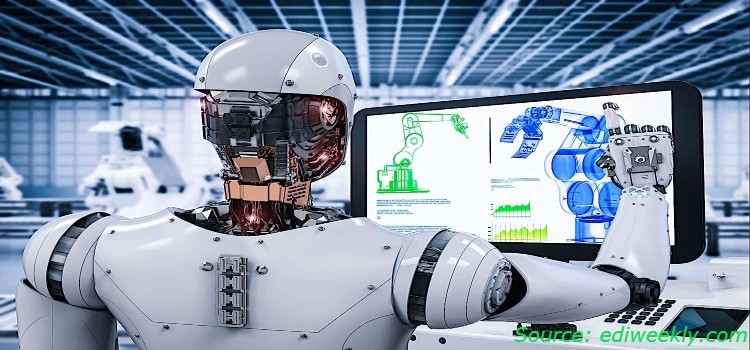
Pet Care Robots Market by Product Type (Stationary Robots and Movable Robots), by Application (Video Recording & Monitoring, PET Entertainment, PET Feeding, and Self-Cleaning Litterbox) and Distribution Channel (Online and Offline) – Global Opportunity Analysis and Industry Forecast, 2024–2030
Industry: ICT & Media | Publish Date: 13-Sep-2024 | No of Pages: 234 | No. of Tables: 314 | No. of Figures: 158 | Format: PDF | Report Code : IC457
Pet Care Robots Market Overview
The global Pet Care Robots Market size was valued at USD 1.74 billion in 2023 and is predicted to reach USD 3.67 billion by 2030, registering a CAGR of 11.2% from 2024 to 2030. The pet care robots, also known as pet care bots includes a range of automated and semi-automated devices designed to assist pet owners in managing various aspects of pet care through advanced technologies such as artificial intelligence (AI), sensors, and others. These robots perform tasks including feeding, grooming, monitoring health, cleaning, and providing entertainment and companionship to pets.
One of the key components of the market include automated feeders, grooming devices, health monitoring robots, automated litter boxes, and interactive entertainment robots.
The market is driven by increasing pet adoption, growing awareness of pet health, and technological advancements, although high initial costs and reliability concerns pose challenges. While opportunities lie in developing multifunctional robots and integrating with smart home systems. There is a significant growth potential as these innovative solutions improve the quality of life for pets and offer convenience to pet owners.
Growing Pet Ownership Fuels the Demand for Pet Care Robots
The rising pet adoption across the globe, particularly in urban areas where individuals and families are increasingly bringing pets into their homes despite the challenges of fast-paced lifestyles and limited living spaces, is driving a significant in pet care robots market demand for convenient and efficient pet care solutions. As per the Euromonitor’s World Market for Pet Care report 2023, it is estimated that about 65% of Millennials plan to acquire a pet by 2025.
Pet owners are trying to seek out automated and reliable products to manage their pets' needs, including feeding, grooming, health monitoring, and companionship, which has created a substantial market for pet care robots that leverage cutting-edge technologies to offer the convenience and reliability required by busy urban pet owners, fueling the expansion of the pet care robots industry as more people recognize the positive impact that pets can have on their well-being.
Rising Adoption of Service Robots Boost the Pet Care Robots Globally
The growing adoption of service robots across diverse industries, from healthcare and hospitality to domestic services, is significantly fueling the global demand for pet care robots. As consumers witness the efficiency, reliability, and quality-of-life enhancements delivered by service robots in their daily lives, they are becoming increasingly receptive to investing in similar technologies to automate and improve the care of their beloved pets.
According to the International Federation of Robotics (IFR) 2023, the global sales of professional service robot grew by 48%. There are about 158,000 units sold and registered by IFR Statistical Department by 2022. This trend is further improved by the rapid advancements in robotics and AI, which have enabled the development of sophisticated pet care robots capable of performing a wide range of tasks, including feeding, grooming, health monitoring, and even providing companionship. The widespread acceptance and integration of service robots are driving consumer confidence and interest in these innovative pet care solutions, as people recognize the potential to simplify pet care while ensuring the well-being and comfort of their furry friends.
The High Cost Associated with Pet Care Robots Hinders the Market
The high initial cost of pet care robots acts as a deterrent for consumers, especially those with limited budgets or who are unsure about the long-term advantages of the technology. This financial obstacle restricts the widespread adoption and growth of the market, even though these robots have the potential to simplify pet care tasks and improve pet health and happiness.
The Integration of Artificial Intelligence (AI) Creates Opportunity for the Market
The integration of artificial intelligence (AI) creates significant in pet care robots market trends by enabling these devices to analyze pet behavior data, adapt interactions based on individual preferences, and improve performance through machine learning. AI-powered robots help to offer personalized care routines, optimize tasks such as feeding and grooming, and provide real-time health monitoring.
This technology also facilitates seamless integration with smart home systems, allowing remote monitoring and control. As an example, LG Electronics launched a new AI-powered robot at Consumer Technology Association (CES) 2024, which is capable of autonomously navigating the home, displaying emotions, understanding speech, and controlling smart appliances. It also monitors pets and manage household tasks when owners are away, aiming to simplify life through advanced AI and robotics, enhancing the smart home experience.
North America Holds the Predominating Share in the Pet Care Robots Industry
North America currently dominates the pet care robot market share and is expected to maintain its leading position through 2030. This market dominance is driven by the region's large population of pet owners who are increasingly seeking innovative solutions to care for their furry companions. As per the report from American Pet Products Association (APPA) 2023-24, a national survey reveals that approximately 66% of households in the U.S. own a pet, totaling approximately 86.9 million households.
Moreover, the rising emphasis towards the development of pet care robots by the key companies, such as Ogmen Robotics, Rocki, Amazon and others drives the demand for the market. For instance, Ogmen Robotics launched the Oro Dog Companion Robot at CES 2024, an USD 800 pet care robot that cares for and engages dogs when owners are away. It uses advanced AI to detect signs of distress or boredom in dogs, responding with treats, play, or soothing music for comfort and entertainment. It integrates with a mobile app to monitor health records and schedules, providing a holistic solution for pet owners concerned about their dog's wellbeing.
Asia-Pacific Region Witnesses Fastest Growth in the Pet Care Robots Market
The Asia-Pacific region is experiencing rapid for pet care robots market growth, driven by increasing government initiatives and a rising number of households owning pets across the region. In 2022, South Korea estimated 6 million pet-owning households, accounting for approximately one in four households. Recently, the South Korean government announced an ambitious plan to grow the pet care industry to USD 11.5 billion by 2027, focusing on areas such as pet food, healthcare, services, and technology.
Furthermore, the aging population, facing physical limitations that hinder traditional pet care, is increasingly driving demand for automated assistance through pet care robots. These robots enable older pet owners to maintain their pets' well-being by automating essential tasks such as feeding, grooming, and monitoring. As per the Japan's government projections, the senior population (aged 65 and above) is anticipated to reach 37.16 million by 2030, accounting for 31.2% of the country's total population.
Competitive Landscape
The promising players operating in the global pet care robots industry includes, Ogmen Robotics, Rocki, HHOLOVE, Whisker, Pawbo Inc., Pumpkii Inc., GuruIoT, Enabot, VARRAM, and Skymee among others.
These players are engaged in various business strategies such as product launches across various regions to maintain their dominance in the global pet care robots industry. For instance, in March 2024, Enabot launched the ROLA PetPal, a pet companion robot with high-def cameras, whole-house mobility, automatic recharging, AI pet recognition, and two-way voice communication for remote pet interaction and monitoring. They also introduced the ROLA PetTracker, featuring a built-in camera, GPS, LBS, image tracking, and sound & light positioning to track pets' locations and routes, set virtual fences, and connect pets via a social network.
Also, in September 2023, HHOLOVE launched the O Sitter, the world's first AI-powered companion robot for cats, offering daily life recording, remote interaction, and automated feeding for comprehensive care. The O Sitter addresses separation anxiety for cats and owners through real-time monitoring, remote play, and customizable feeding schedules. This innovative robot ensures cats receive the attention and care they need, even when their owners are away, providing peace of mind for pet parents.
Moreover, in May 2022, Whisker launched the Litter-Robot 4, a sleek, self-cleaning litter box with advanced litter-sifting technology, real-time monitoring, health insights, and odor neutralization. It features a patented self-cleaning mechanism, OdorTrap system, MultiCat design for up to four cats, and a companion app for remote monitoring and control, offering modern cat owners a smarter and more convenient care solution.
Pet Care Robots Market Key Segments
By Product Type
-
Stationary Robots
-
Movable Robots
By Application
-
Video Recording & Monitoring
-
PET Entertainment
-
PET Feeding
-
Self-Cleaning Litterbox
By Distribution Channel
-
Online
-
Offline
By Region
-
North America
-
The U.S.
-
Canada
-
Mexico
-
-
Europe
-
The UK
-
Germany
-
France
-
Italy
-
Spain
-
Denmark
-
Finland
-
Netherlands
-
Norway
-
Russia
-
Sweden
-
Rest of Europe
-
-
Asia-Pacific
-
China
-
Japan
-
India
-
South Korea
-
Australia
-
Indonesia
-
Singapore
-
Taiwan
-
Thailand
-
Rest of Asia-Pacific
-
-
Rest of World
-
Latin America
-
Middle East
-
Africa
-
Key Players
-
Ogmen Robotics
-
Rocki
-
HHOLOVE
-
Whisker
-
Pawbo Inc.
-
Pumpkii Inc.
-
GuruIoT
-
Enabot
-
VARRAM
-
Skymee
REPORT SCOPE AND SEGMENTATION:
|
Parameters |
Details |
|
Market Size Value in 2023 |
USD 1.74 Billion |
|
Revenue Forecast in 2030 |
USD 3.67 Billion |
|
Value Growth Rate |
CAGR of 11.2% from 2024 to 2030 |
|
Analysis Period |
2023–2030 |
|
Base Year Considered |
2023 |
|
Forecast Period |
2024–2030 |
|
Market Size Estimation |
Billion (USD) |
|
Growth Factors |
|
|
Companies Profiled |
10 |
|
Market Share |
Available for 10 companies |
|
Customization Scope |
Free customization (equivalent up to 80 working hours of analysts) after purchase. Addition or alteration to country, regional, and segment scope. |
|
Pricing and Purchase Options |
Avail customized purchase options to meet your exact research needs. |




 Speak to Our Analyst
Speak to Our Analyst

































